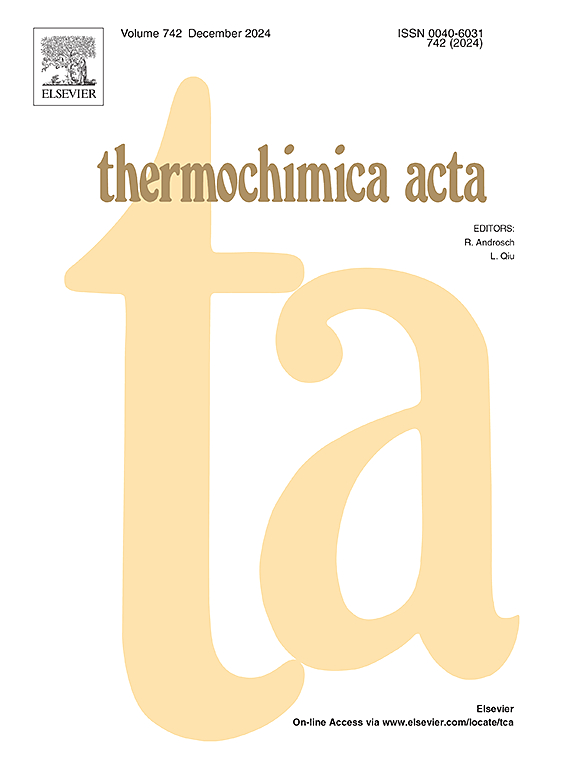典型含杂质有机过氧化物的热分解及热危害分析
IF 3.1
2区 化学
Q2 CHEMISTRY, ANALYTICAL
引用次数: 0
摘要
化学工业中的有机过氧化物由于其不稳定性会引起安全风险,这促使人们对其热稳定性产生兴趣,以避免危险。研究了异丙烯过氧化氢(CHP)、过氧化二氨基(DCP)、过氧化二叔丁基(DTBP)、1,3-二(叔丁基过氧异丙基)苯(BIBP)和2,5-二甲基-2,5-二(叔丁基过氧)己烷(DBPH)的热危害和分解机理,以及杂质对这些化合物的影响。用差示扫描量热法(DSC)测定了这些化合物的热力学性质,并用动力学模型计算了它们的表观活化能。采用加速量热法(ARC)获得绝热分解特性,并采用风险矩阵评价。通过气相色谱-质谱(GC-MS)对分解产物进行了表征,并提出了相应的热分解途径。利用密度泛函理论(DFT)计算了所提路径中每一步的能量。研究结果为这五种有机过氧化物在化学工业中的安全应用提供了重要的指导。本文章由计算机程序翻译,如有差异,请以英文原文为准。
Thermal decomposition and thermal hazards analysis of typical organic peroxides with impurities
Organic peroxides in the chemical industry can cause safety risks due to instability, prompting an interest in their thermal stability to avoid dangers. This study investigated the thermal hazards and decomposition mechanisms of cumene hydroperoxide (CHP), dicumyl peroxide (DCP), di-tert-butyl peroxide (DTBP), 1,3-bis(tert-butylperoxyisopropyl)benzene (BIBP), and 2,5-dimethyl-2,5-di-(tert-butylperoxy)hexane (DBPH), and the influence of impurities on these compounds. The thermodynamic properties of these compounds were determined via differential scanning calorimetry (DSC), and their apparent activation energies were calculated by kinetic models. The adiabatic thermal decomposition characteristics were obtained via accelerating rate calorimetry (ARC), and the risk matrix assessment was employed. The decomposition products were characterized via gas chromatography-mass spectrometry (GC–MS), and the corresponding thermal decomposition pathways were proposed. The energy of each step in the proposed pathways was calculated using density functional theory (DFT). The results provide critical guidance for the safe application of these five organic peroxides within the chemical industry.
求助全文
通过发布文献求助,成功后即可免费获取论文全文。
去求助
来源期刊

Thermochimica Acta
化学-分析化学
CiteScore
6.50
自引率
8.60%
发文量
210
审稿时长
40 days
期刊介绍:
Thermochimica Acta publishes original research contributions covering all aspects of thermoanalytical and calorimetric methods and their application to experimental chemistry, physics, biology and engineering. The journal aims to span the whole range from fundamental research to practical application.
The journal focuses on the research that advances physical and analytical science of thermal phenomena. Therefore, the manuscripts are expected to provide important insights into the thermal phenomena studied or to propose significant improvements of analytical or computational techniques employed in thermal studies. Manuscripts that report the results of routine thermal measurements are not suitable for publication in Thermochimica Acta.
The journal particularly welcomes papers from newly emerging areas as well as from the traditional strength areas:
- New and improved instrumentation and methods
- Thermal properties and behavior of materials
- Kinetics of thermally stimulated processes
 求助内容:
求助内容: 应助结果提醒方式:
应助结果提醒方式:


